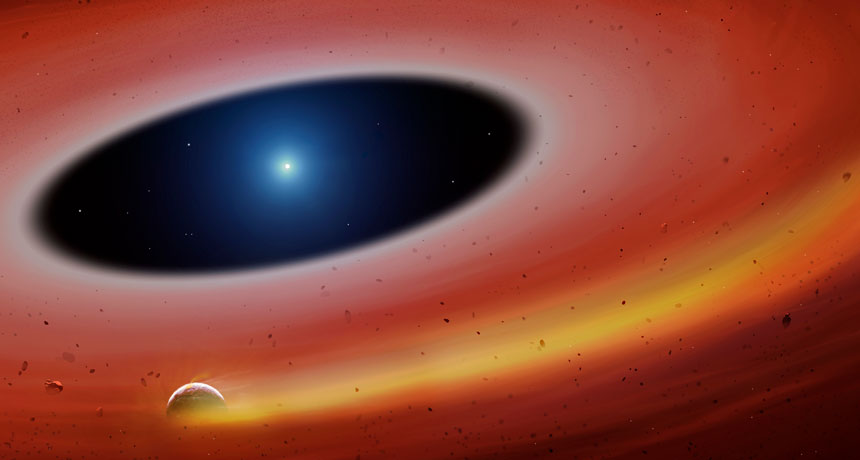
PLUCKY PLANETESIMAL The small, dense remnant of a planet (illustrated) survived the collapse of its sun into a white dwarf, and is now skirting the dead star with a calcium gas stream (yellow) trailing behind it, researchers report.
Mark Garlick/Univ. of Warwick